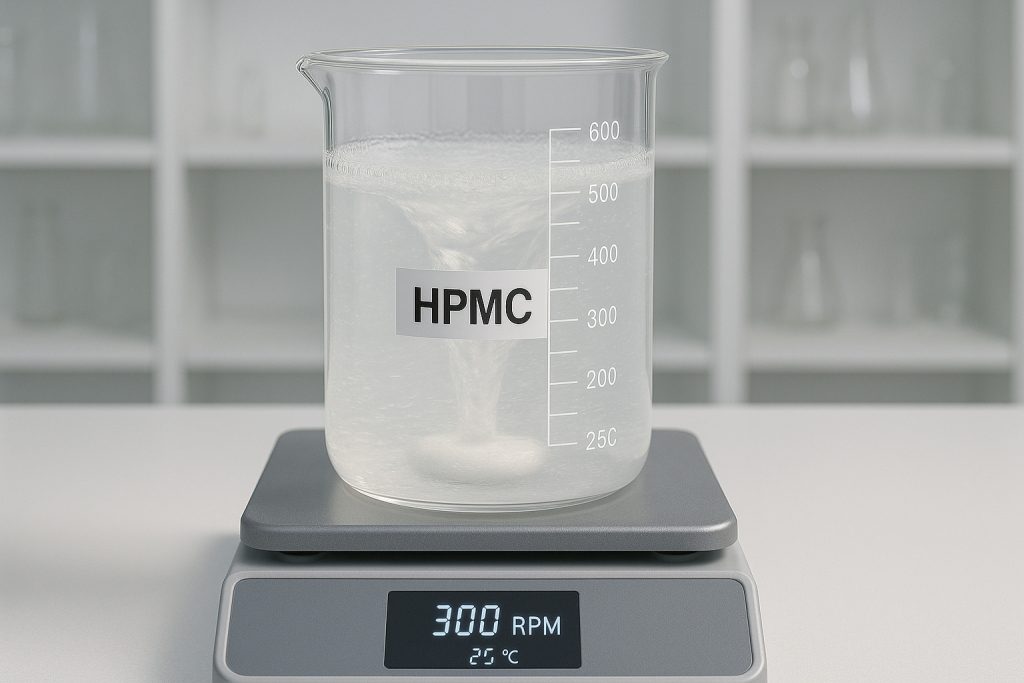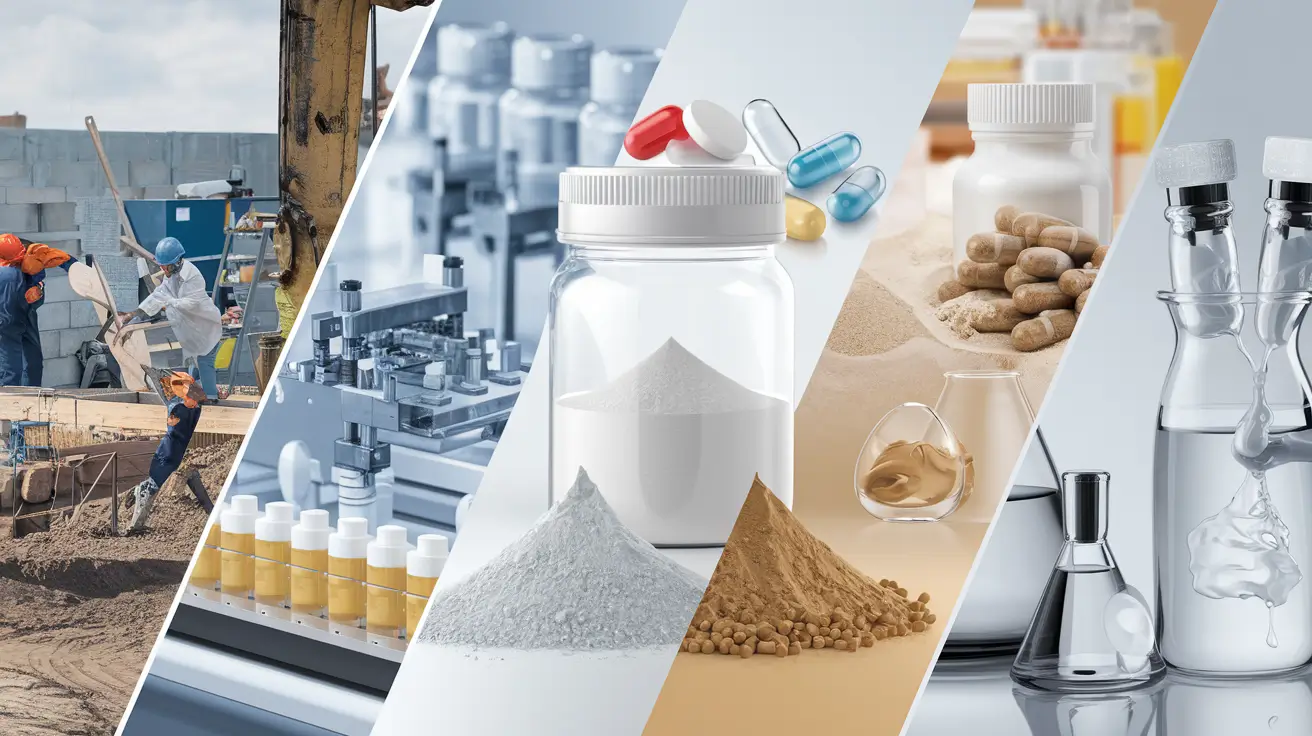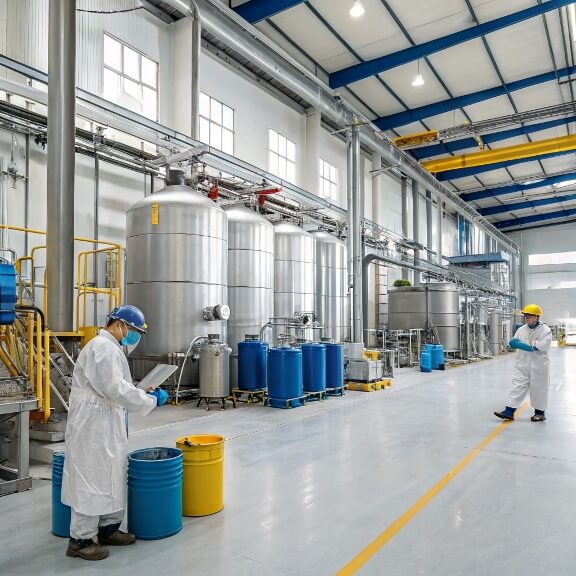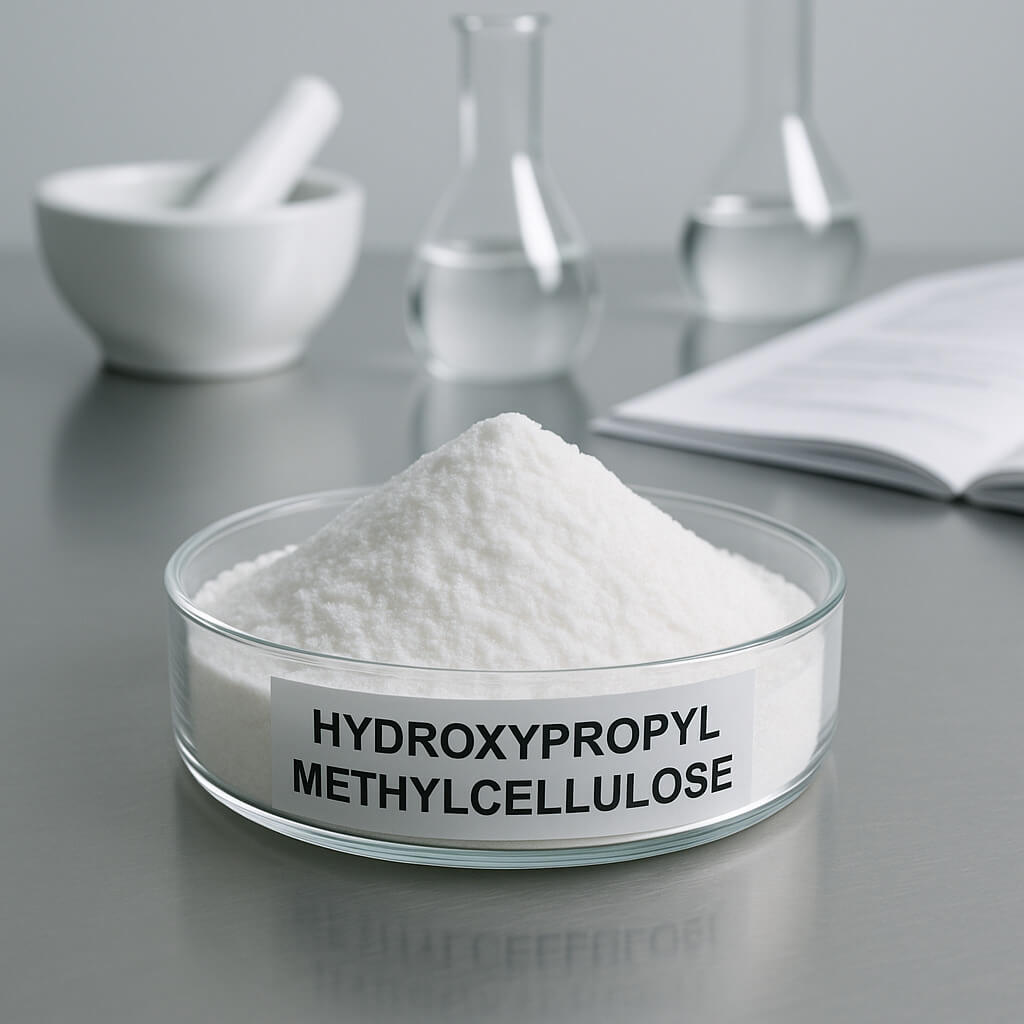Selecting the right Hydroxypropyl Methylcellulose (HPMC) grade is critical for achieving optimal performance in your applications. Whether you work in construction, pharmaceuticals, food production, or personal care, understanding how different HPMC grades function can significantly impact your product quality and performance. This article examines the various HPMC grades available on the market and matches them with their most suitable applications. By identifying the specific properties of each grade and how they translate to real-world performance, you’ll gain practical insights to make informed decisions for your formulations.

1. What Is HPMC And Why Is It Important In Various Industries?
Hydroxypropyl Methylcellulose (HPMC) is a semi-synthetic, non-ionic cellulose ether derived from cellulose through chemical modification. The process involves treating cellulose with sodium hydroxide, followed by reactions with methyl chloride and propylene oxide to introduce methoxyl and hydroxypropyl groups onto the cellulose backbone. This chemical structure gives HPMC its unique properties, including water solubility, surface activity, and film-forming capabilities.
وهذا ما يجعلها مميزة: HPMC possesses remarkable versatility that few other polymers can match. Its ability to function as a thickener, binder, film-former, protective colloid, and water retention agent makes it indispensable across multiple industries.
The global HPMC market exceeds $1.2 billion annually, with growth rates averaging 5-7% per year. Several key industries rely heavily on HPMC:
| صناعة | Primary HPMC Functions | Market Share (%) |
|---|---|---|
| بناء | Water retention, workability improvement | 45 |
| المستحضرات الصيدلانية | Controlled release, film coating | 30 |
| طعام | Thickening, stabilization | 15 |
| العناية الشخصية | Rheology modification, film formation | 5 |
| Others | Various applications | 5 |
What distinguishes HPMC from other polymers is its remarkable stability across a wide pH range (2-12), excellent resistance to enzymatic degradation, and compatibility with numerous other ingredients. These characteristics, combined with its non-toxic and non-allergenic nature, make HPMC a preferred choice for formulators seeking reliable performance and safety.
2. How Do Viscosity Grades Of HPMC Affect Performance In Different Applications?
Viscosity represents one of the most critical parameters when selecting an appropriate HPMC grade. It directly influences the polymer’s functionality in various applications and serves as the primary classification method for commercial HPMC products.
The viscosity of HPMC is typically measured in a 2% aqueous solution at 20°C using rotational viscometers. Based on these measurements, HPMC grades are categorized into low, medium, and high viscosity ranges.
But why does this matter to you? The viscosity grade you select directly impacts how your product will perform in real-world conditions.
Low viscosity HPMC grades (3-100 mPa·s) offer excellent solubility and are easily incorporated into formulations. These grades find extensive use in:
| طلب | درجة HPMC | الفائدة الرئيسية |
|---|---|---|
| Tablet coating | HPMC 3-15 mPa·s | Rapid dissolution, thin film formation |
| Cement-based tile adhesives | HPMC 15-50 mPa·s | Improved workability without excessive stickiness |
| الحلول العينية | HPMC 4-10 mPa·s | Lubrication without blurring vision |
| Spray-applied products | HPMC 50-100 mPa·s | Appropriate atomization and surface coverage |
Medium viscosity HPMC grades (100-15,000 mPa·s) provide balanced performance characteristics and serve as the workhorses in many applications. They offer optimal water retention and workability for renders and plasters, predictable drug release profiles for controlled-release tablets, and stable viscosity for food thickeners.
High viscosity HPMC grades (15,000-200,000 mPa·s) deliver maximum thickening power and extended functionality. They provide extended flow time for self-leveling compounds, very slow erosion rates for extended-release matrices, and maximum open time for construction adhesives.
When selecting the optimal viscosity grade, formulators must balance these considerations against the specific requirements of their application. For instance, a tile adhesive formulator might select a medium viscosity grade to achieve adequate water retention without making the product too sticky or difficult to apply.
3. What Role Do Substitution Types Play In HPMC Grade Selection?
Beyond viscosity, the substitution pattern of HPMC significantly influences its performance characteristics. The two key substitution parameters are methoxyl content and hydroxypropyl content, which together determine many of the polymer’s functional properties.
Think about it this way: The methoxyl groups act like the polymer’s “water-repelling” components, while hydroxypropyl groups serve as its “water-loving” elements.
Commercial HPMC grades are often classified using a letter-number system that indicates their substitution type:
| نوع HPMC | ميثوكسيل (%) | هيدروكسي بروبيل (%) | الخصائص الرئيسية |
|---|---|---|---|
| E-Type | 28-30 | 7-12 | Strong thermal gelation, good organic solubility |
| F-Type | 27-30 | 4-7.5 | Intermediate properties, balanced performance |
| K-Type | 19-24 | 7-12 | Excellent water solubility, weaker thermal gelation |
| J-Type | 16.5-20 | 13-30 | Maximum hydroxypropyl content, highest hydrophilicity |
The substitution pattern directly affects the thermal gelation behavior of HPMC, which is crucial in many applications. Thermal gelation refers to the property where HPMC solutions form a gel when heated above a certain temperature (typically 65-90°C, depending on the grade).
E-type HPMC exhibits the strongest thermal gelation properties, making it valuable in applications where heat stability is critical, such as baked food products and construction products used in hot weather. K-type HPMC offers excellent cold water solubility and weaker thermal gelation, making it ideal for cold-process pharmaceutical formulations and applications requiring rapid dissolution.
When selecting an HPMC grade, formulators must consider both the viscosity and substitution type to achieve optimal performance. For example, a pharmaceutical formulator developing a controlled-release tablet might select a K-type HPMC with medium viscosity (K4M or K15M) to achieve the desired dissolution profile, while a construction product developer might prefer an E-type HPMC with similar viscosity (E4M or E15M) for better performance in hot weather conditions.
4. Which HPMC Grades Work Best For Construction And Building Materials?
The construction industry represents the largest market for HPMC, where it serves as a critical additive in various cement-based products. The primary functions of HPMC in construction applications include water retention, workability improvement, adhesion enhancement, and sag resistance.
You’ll want to know this: Construction-specific HPMC grades often contain additional modifications or treatments to enhance their performance in cementitious systems.
| طلب | درجة HPMC الموصى بها | Key Properties | Dosage Range (%) |
|---|---|---|---|
| مواد لاصقة للبلاط | HPMC 15,000-30,000 mPa·s, E-type | High water retention, extended open time | 0.2-0.4 |
| مركبات التسوية الذاتية | HPMC 20,000-40,000 mPa·s, K-type | Controlled flow properties, air release | 0.1-0.3 |
| الجص/الجص | HPMC 15,000-60,000 mPa·s, E-type | Excellent workability, sag resistance | 0.1-0.3 |
| Joint Compounds | HPMC 30,000-80,000 mPa·s, F-type | Good adhesion, crack resistance | 0.2-0.5 |
| Grouts | HPMC 10,000-30,000 mPa·s, E-type | Water retention, color consistency | 0.1-0.3 |
For tile adhesives, high water retention is crucial to ensure proper cement hydration and adequate open time. E-type HPMC with medium to high viscosity provides optimal performance, particularly in hot or dry conditions where rapid water loss can be problematic.
Self-leveling compounds require HPMC grades that provide the right balance of flow properties and water retention. K-type HPMC with medium-high viscosity helps control the flow characteristics without excessive air entrainment.
A case study from a major European construction project demonstrated the impact of HPMC grade selection on tile adhesive performance. When the initially specified HPMC grade (15,000 mPa·s, K-type) resulted in insufficient open time in summer conditions, switching to a 25,000 mPa·s E-type HPMC resolved the issue, reducing callbacks and failures by over 80%.
Construction-specific HPMC grades often incorporate surface treatments or modifications to improve their compatibility with cement and other construction chemicals, including surface treatments to reduce air entrainment and delayed dissolution features for easier mixing.
5. How Do Pharmaceutical Applications Determine HPMC Grade Selection?
The pharmaceutical industry has some of the most stringent requirements for HPMC grades, driven by regulatory considerations and precise functional needs. Pharmaceutical-grade HPMC must meet specific compendial standards, including those set by the United States Pharmacopeia (USP), European Pharmacopoeia (Ph. Eur.), and Japanese Pharmacopoeia (JP).
Here’s something crucial: Pharmaceutical HPMC grades are often marketed under the name “hypromellose” and categorized using a unique nomenclature system.
The USP/NF designation for HPMC includes a number indicating the approximate percentage of methoxyl and hydroxypropyl groups, followed by a letter and number indicating the viscosity. For example, “HPMC 2910 4000 mPa·s” indicates an HPMC with approximately 29% methoxyl and 10% hydroxypropyl groups, with a viscosity of 4000 mPa·s.
| طلب | USP/NF Designation | Commercial Examples | وظيفة |
|---|---|---|---|
| Controlled-Release Matrices | HPMC 2208 4000-100,000 mPa·s | Methocel K4M, K15M, K100M | Matrix formation, erosion control |
| Immediate-Release Coatings | HPMC 2910 3-15 mPa·s | Methocel E3, E5, E15 | Film formation, moisture protection |
| Sustained-Release Coatings | HPMC 2910 50-4000 mPa·s | Methocel E50, E4M | Diffusion barrier, release control |
| Capsule Manufacturing | HPMC 2910 3-15 mPa·s | Capsugel HPMC | Shell formation, stability |
| Binder in Wet Granulation | HPMC 2910 100-4000 mPa·s | Methocel E100, E4M | Particle adhesion, granule formation |
For controlled-release drug delivery systems, HPMC 2208 (K-type) with viscosities ranging from 4,000 to 100,000 mPa·s serves as the industry standard. These grades form hydrophilic matrix systems that control drug release through a combination of diffusion and erosion mechanisms.
Tablet coating applications typically utilize lower viscosity HPMC grades (3-15 mPa·s for immediate-release coatings, 50-4000 mPa·s for sustained-release coatings). These grades provide good film-forming properties, with the specific selection depending on the coating equipment, process parameters, and desired release characteristics.
Bioavailability considerations play a crucial role in HPMC grade selection for pharmaceutical applications. The polymer’s interaction with the API, its impact on dissolution and absorption, and its behavior in the gastrointestinal environment must all be carefully evaluated.
6. What Are The Optimal HPMC Grades For Food And Personal Care Products?
Food and personal care applications present unique requirements for HPMC grades, driven by sensory considerations, regulatory constraints, and specific functional needs. In these consumer-facing industries, the performance of HPMC directly impacts product acceptance and commercial success.
You might be surprised to learn: Food-grade HPMC offers unique advantages over other hydrocolloids, including stability in high-salt environments and during freezing/thawing cycles.
| تطبيق الغذاء | درجة HPMC الموصى بها | Key Functionality | Typical Usage Level (%) |
|---|---|---|---|
| Gluten-Free Baked Goods | HPMC F4M, F50 | Structure formation, moisture retention | 1-2 |
| Fried Foods | HPMC E15, E50 | Oil barrier, moisture retention | 0.5-1 |
| الصلصات والتتبيلات | HPMC K100, K4M | Thickening, stabilization | 0.2-0.5 |
| Plant-Based Meat Alternatives | HPMC K4M, K15M | Texture, binding, juiciness | 1-3 |
| بوظة | HPMC E4M, E15 | Melt resistance, texture improvement | 0.1-0.3 |
In gluten-free baked goods, HPMC serves as a critical structure-building ingredient, mimicking some of the functional properties of gluten. For fried foods, E-type HPMC creates a thermal-gelling film at the food surface during frying, acting as a barrier to oil absorption while retaining moisture.
In personal care applications, HPMC must meet cosmetic-grade specifications and provide specific sensory and functional benefits. In skin care formulations, HPMC creates lightweight, non-greasy films that enhance moisturization and provide a smooth feel. Hair styling products benefit from the film-forming and holding properties of E-type HPMC, which provides flexible hold without flaking or stiffness.
Clean label and natural formulation considerations have become increasingly important in both food and personal care applications. HPMC offers advantages in this regard as it is plant-derived, non-GMO, vegan-friendly, and free from common allergens.
7. How Can You Troubleshoot Common Issues With Different HPMC Grades?
Even with careful grade selection, formulators may encounter challenges when working with HPMC. Understanding common issues and their solutions can save considerable time and resources during product development and manufacturing.
Let me share a practical tip: The “hot/cold” technique often resolves dissolution issues by first dispersing HPMC in hot water (above its thermal gelation temperature) before adding cold water to complete hydration.
| مشكلة | Possible Causes | Solutions |
|---|---|---|
| Poor Dissolution/Lumping | Incorrect dispersion technique, inadequate mixing | Use hot/cold technique, increase shear, pre-blend with other dry ingredients |
| اللزوجة غير المتسقة | Batch-to-batch variation, incomplete hydration, pH fluctuations | Standardize hydration time, control pH, adjust usage level based on certificate of analysis |
| Incompatibility with Other Ingredients | Ionic interactions, competition for water, chemical reactions | Pre-screen for compatibility, adjust addition sequence, modify formulation |
| Thermal Gelation Issues | Incorrect grade selection, unexpected temperature conditions | Switch to different substitution type, adjust concentration, modify process conditions |
| Microbial Contamination | Inadequate preservation, contaminated water, poor handling | Use preservatives, implement proper handling procedures, reduce processing time |
When addressing inconsistent performance across batches, formulators should review the certificate of analysis for each batch, standardize mixing and hydration procedures, and implement appropriate quality control tests.
Compatibility issues with other ingredients can be particularly challenging. HPMC may interact with ionic ingredients, competing hydrocolloids, certain preservatives, high levels of alcohols or glycols, and strongly acidic or alkaline components.
Proper storage and handling are essential for maintaining HPMC quality. The polymer should be stored in cool, dry conditions, protected from excessive heat and humidity. Once opened, containers should be tightly resealed to prevent moisture absorption.
When substituting between different HPMC grades, formulators should consider not only viscosity but also substitution type and any specialized modifications. A direct 1:1 substitution is rarely optimal, and formulation adjustments are typically required.
خاتمة
Selecting the optimal HPMC grade for your specific application requires careful consideration of multiple factors, including viscosity, substitution type, and specialized modifications. By understanding how these parameters influence performance in different contexts, formulators can make informed decisions that enhance product quality and manufacturing efficiency.
The versatility of HPMC across construction, pharmaceutical, food, and personal care applications stems from its unique combination of properties and the availability of numerous specialized grades. This diversity allows formulators to fine-tune their selection based on specific functional requirements, regulatory considerations, and cost constraints.
As you approach HPMC grade selection for your applications, consider working closely with suppliers who can provide technical guidance, samples for evaluation, and supporting documentation. Their expertise can help navigate the complexities of grade selection and troubleshooting, ultimately leading to more successful formulations.
التعليمات
Q1: What is the difference between HPMC and other cellulose derivatives like CMC?
HPMC (Hydroxypropyl Methylcellulose) differs from CMC (Carboxymethyl Cellulose) in several important ways. While both are cellulose derivatives, HPMC is non-ionic, whereas CMC is anionic due to its carboxymethyl groups. This fundamental difference affects their compatibility with other ingredients, especially in the presence of electrolytes or at varying pH levels. HPMC exhibits thermal gelation (forming gels when heated), while CMC does not. HPMC also provides better stability across a wider pH range (2-12) compared to CMC, which performs optimally in neutral to slightly alkaline conditions.
Q2: Can different HPMC grades be mixed to achieve custom properties?
Yes, different HPMC grades can be blended to achieve intermediate or custom properties. Mixing grades with different viscosities allows formulators to fine-tune the rheological profile of their products without requiring new inventory items. Similarly, blending different substitution types (e.g., E-type and K-type) can create intermediate thermal gelation behaviors. This approach is particularly valuable in pharmaceutical applications, where specific drug release profiles might require properties not available from standard grades.
Q3: How do temperature and pH affect the performance of various HPMC grades?
Temperature significantly impacts HPMC performance through its influence on solubility and thermal gelation. At low temperatures, HPMC hydrates and dissolves more slowly but eventually reaches higher viscosity. As temperature increases, viscosity gradually decreases until reaching the thermal gelation temperature, at which point a sharp increase in viscosity occurs as the polymer forms a gel network. This thermal gelation temperature varies by grade: E-types typically gel around 65-70°C, F-types around 70-75°C, and K-types around 80-85°C. Regarding pH, HPMC maintains relatively stable viscosity across a wide range (pH 2-12).
Q4: What testing methods should be used to verify HPMC grade performance?
Comprehensive HPMC performance verification requires multiple testing approaches. Viscosity testing using rotational viscometers provides the fundamental classification parameter. Thermal gelation properties can be assessed through hot stage microscopy or rheological measurements during temperature ramping. Application-specific tests are equally important: water retention in construction applications can be measured using methods like DIN 18555, while drug release testing for pharmaceutical applications follows pharmacopeial methods. Film properties may require mechanical testing and barrier property assessment.
Q5: Are there environmentally friendly or sustainable options within HPMC grades?
The cellulose used in HPMC production comes from renewable plant sources (wood pulp or cotton linters), giving it an inherent sustainability advantage over petroleum-derived polymers. Several manufacturers now offer HPMC grades with enhanced environmental credentials. These include grades produced using wood from certified sustainable forestry operations (FSC or PEFC certified), manufacturing processes with reduced water and energy consumption, and production facilities powered by renewable energy. The non-toxic nature of HPMC also contributes to its environmental profile, as it poses minimal risk to aquatic ecosystems.




